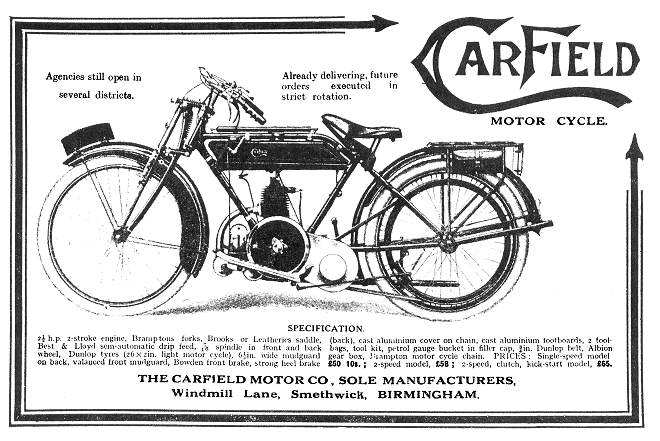|
Carfield motorcycles were made by The
Carfield Motor Company, in Windmill Lane, Smethwick. The
company was founded by a Mr. Carter and a Mr. Fielding in
1919.
Two models were launched in the
company’s first year, both belt driven and powered by a
2½hp. Villiers 2-stroke engine. The more expensive model had
a two-speed Albion gearbox, and a clutch. It sold for £58,
and was also available with a kick-starter for an extra £7.
The cheaper model had a direct drive, and sold for
£50.10s.0d. By 1921 the machines were available with
Villiers, J.A.P., or Coventry Victor engines.

An advert from 1919. Courtesy of the
late Jim Bouton.
Carfield’s best known model, the
Carfield ‘Baby’ appeared in 1923. It was fitted with a 1½hp.
Villiers engine, a 2-speed Albion gearbox, AMAC carburettor,
and a belt drive. It sold for £30. Extras included an
electric light (an extra £1.10s.0d.) and a kick-starter (an
extra £2). Both brakes worked on the rear belt rim.
The machine made a name for itself when
Bruce Carter, a director of the company, won a bronze medal
for successfully competing in the 1923 Scottish Six Days
Trial, riding a Carfield ‘Baby’. |